Praised for their rich aroma, earthy taste and meaty texture, Shiitake mushrooms are among the most popular mushrooms in Chinese/Asian cuisines. Read this guide to learn their characteristics, usage, purchasing tips, rehydration methods and more.
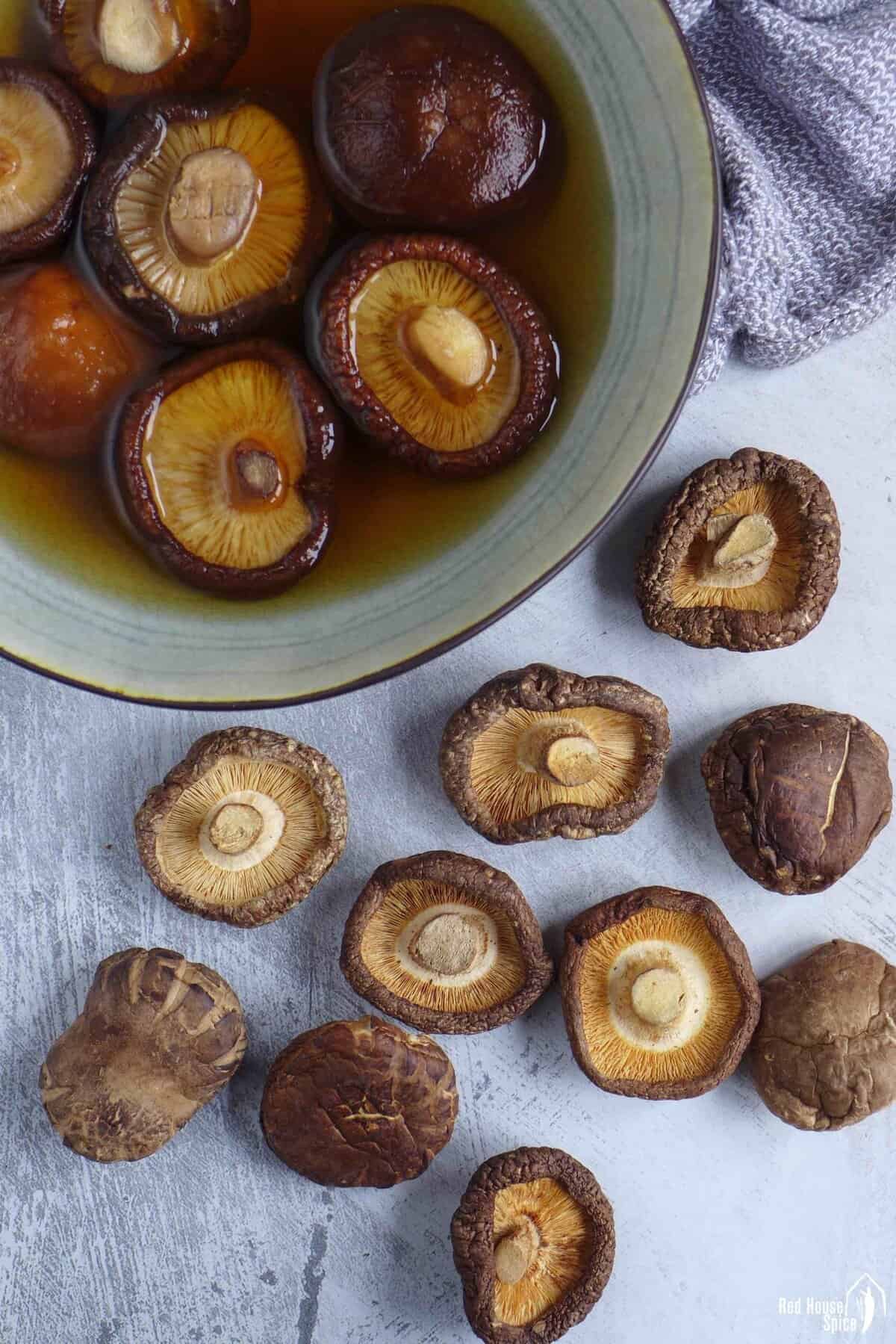
Jump to:
What are shiitake mushrooms?
Shiitake mushrooms are a type of mushrooms that grow on decaying logs of hardwood trees prevalent in East Asian countries. “Shiitake” is a Japanese compound word that roughly translates as “tree mushrooms”. They are also known as oakwood mushrooms, black forest mushrooms, black mushrooms, etc.
In Chinese, they are called Xiāng Gū/香菇 which means fragrant mushrooms. Two other names, Dōng Gū/冬菇 (winter mushrooms) and Huā Gū/花菇 (flower mushrooms), refer to two high-quality varieties.
They have large brown umbrella-like caps and thin cream-colored stems. They are made up of 75% water, which is considerably less than most mushrooms, giving them a chewier, meat-like texture and a more concentrated aroma and flavor.
Like soy sauce, sesame oil, etc., dried shiitake mushrooms are considered an essential ingredient in the Chinese pantry. There are countless ways to use them both as the star component of a dish and as a complement to other ingredients.
Purchasing tips
Contrary to popular belief that they are “wild mushrooms,” shiitakes are one of the most cultivated mushrooms in the world. Nowadays, they are not only grown in Asian countries but also in some parts of the US and Europe.
Fresh shiitake. Look for them in the vegetable chiller section. Make sure that the caps are whole, smooth and not discolored. If they have a slimy feel and smell of unnatural odors, they are not fresh enough for consumption.
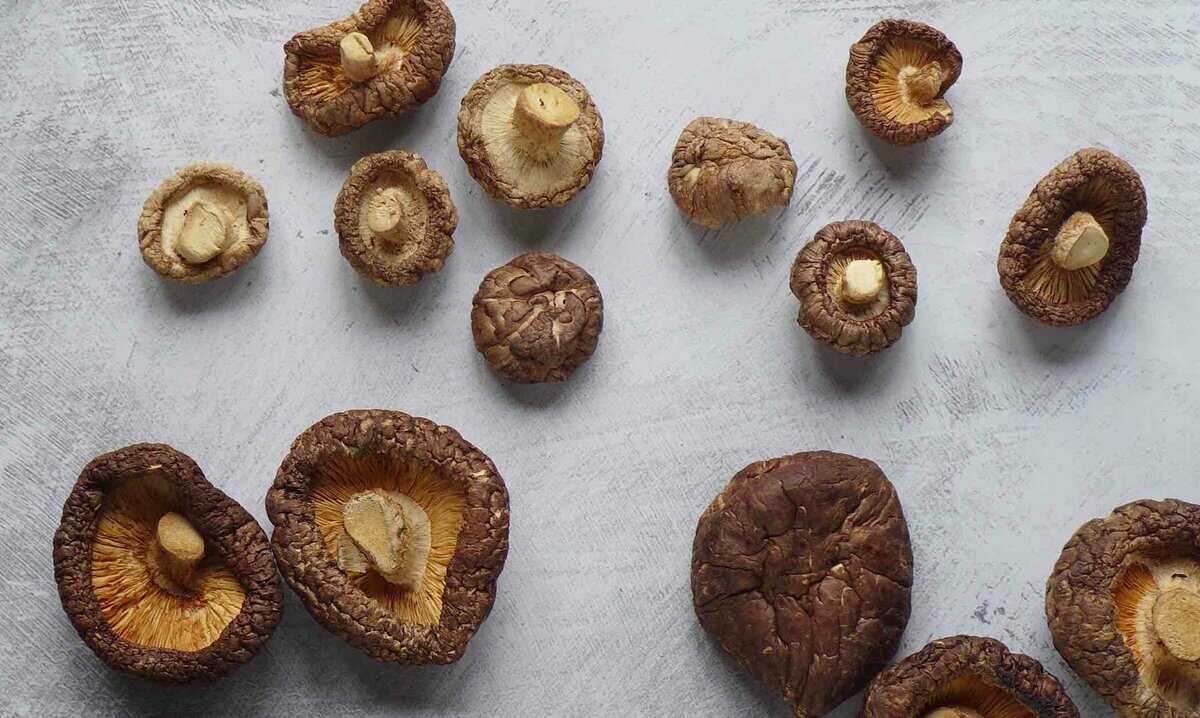
Dried shiitake. You can find dried shiitake mushrooms in the dry goods section of any Chinese/Asian stores. They are usually packed in plastic bags either in whole or in chopped pieces. In terms of the cap sizes, the bigger ones are meatier and usually require slicing before cooking. The small ones can be used as a whole so no cutting is needed.
Fresh shiitake vs. Dried shiitake
Both fresh and dried shiitake mushrooms are used in cooking. They share the same flavor profile, but they also differ in many ways. While the fresh ones have a buttery taste and tender texture, the dried ones take a smoky aroma and chewy mouthfeel.
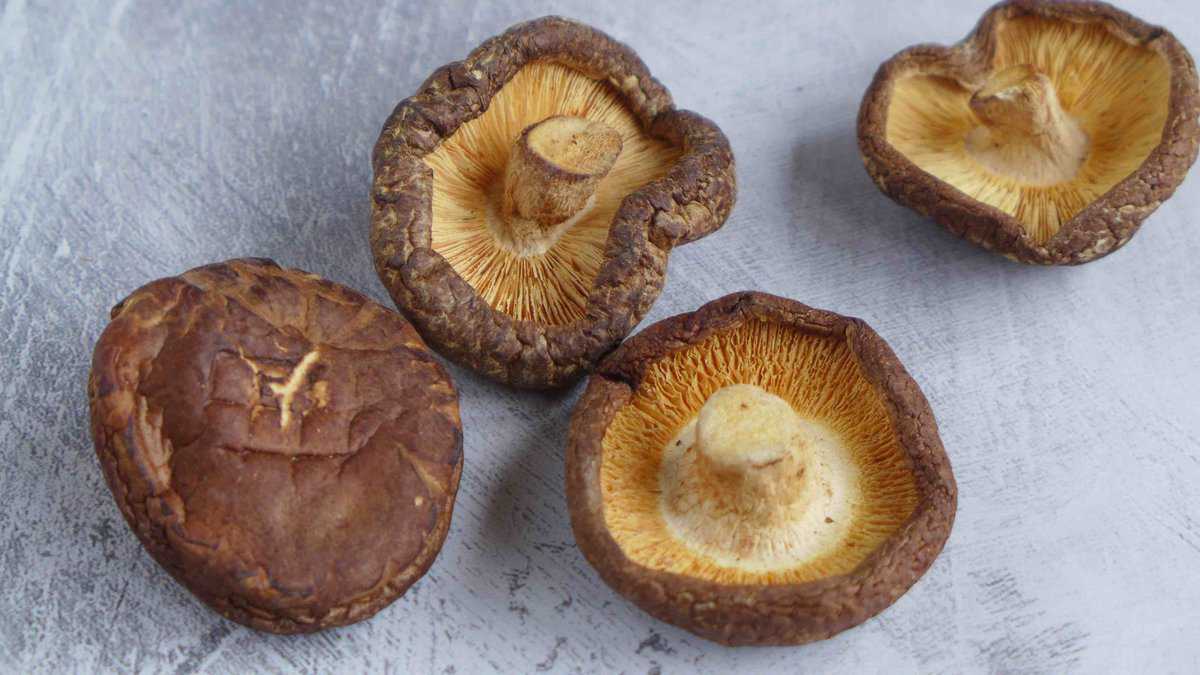
In Chinese cooking, dried shiitake mushrooms have a wider usage than fresh ones for the following reasons:
- Longer storage life. Fresh shiitake can be stored in the fridge for up to two weeks when properly stored. Dried shiitake, however, can last for years as long as they are kept tightly sealed in a cool, dry place. Because of its long shelf life, you’re likely to have them at hand anytime you need them.
- Intensified flavor and aroma. The drying process gives shiitake mushrooms a more robust taste. The fragrance and umami taste of dried ones are distinctively stronger and deeper than fresh ones. They also have a hint of smokiness which pairs well with meat.
- A flavorful by-product. The rehydration process of dried shiitake produces a nice by-product: the water in which the mushrooms are soaked picks up the umami taste. It can be added to many dishes to elevate the flavor.
How to clean fresh ones
When using fresh Shiitake, always make sure to clean them the right way. Since they are not buried in the dirt while growing, all they need is a thorough wiping using a wet paper towel. Generally speaking, it is discouraged to soak fresh mushrooms because they tend to absorb too much water. This can result in soggy and watery dishes.
How to rehydrate dried ones
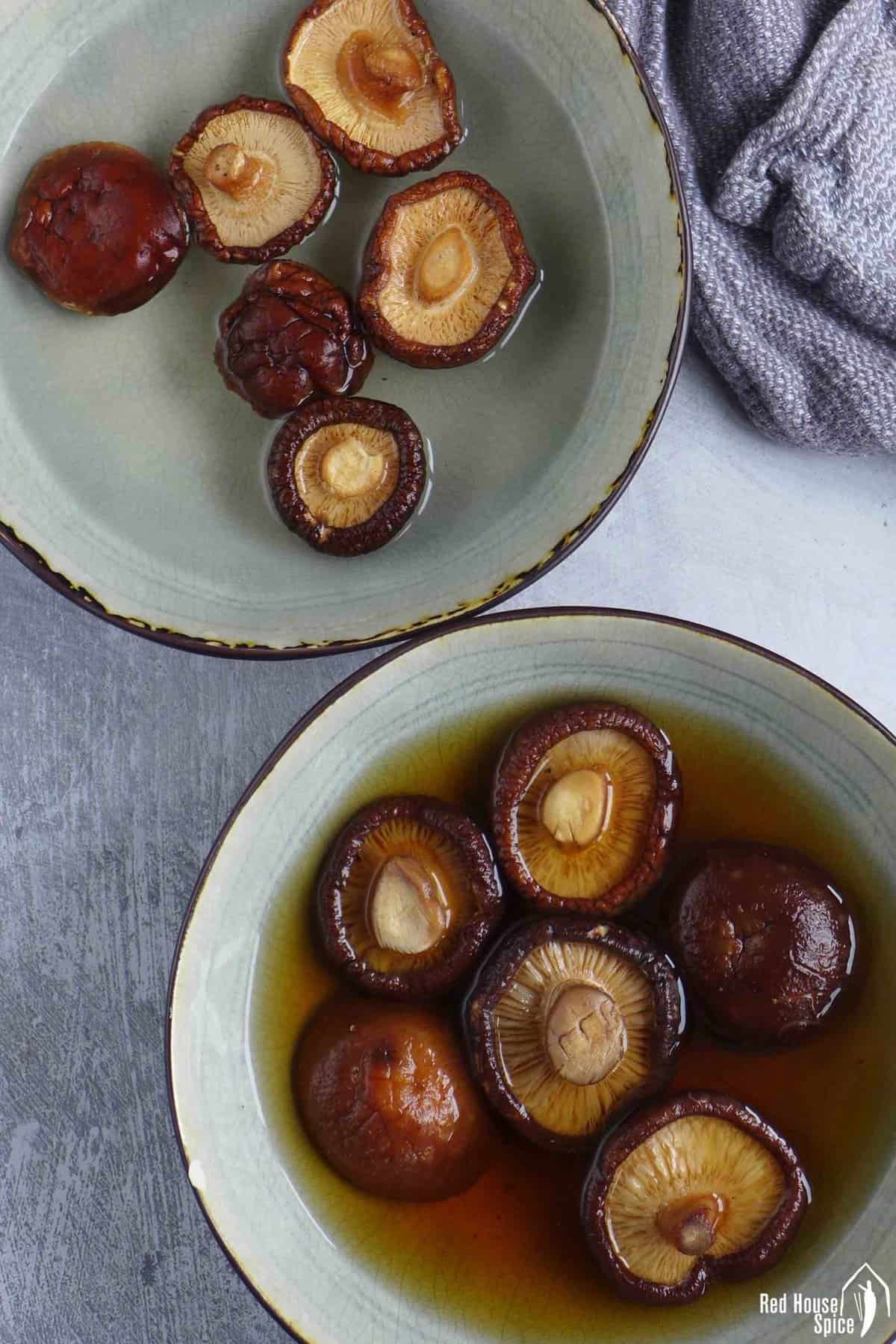
Dried shiitake mushrooms require rehydration beforehand. Here is how:
- Cold water method. Rinse them under running water then put into a large bowl. Fill the bowl with cold water. Leave to soak overnight (or at least 6 hours) on the counter or in the fridge if your kitchen is very warm. This is my preferred method as it produces a better result: they are thoroughly rehydrated thus having an optimal texture.
- Hot water method. This method speeds up the process so it’s a good option when you’re short on time. Add hot water to the mushrooms, then place a small plate on top to keep them completely immersed in the water (otherwise they’ll float to the surface). Leave to soak for about 20-30 minutes until they are plump and soft.
Ways to use them
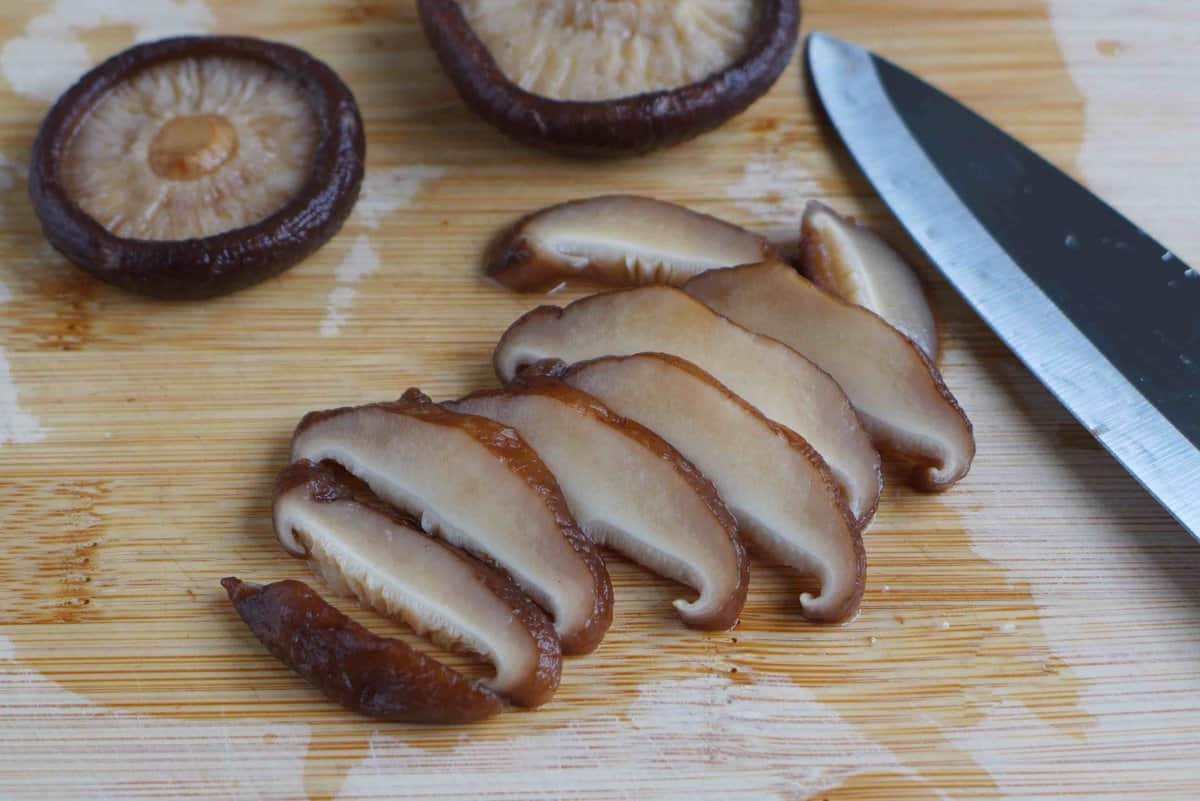
Used as whole or in slices, shiitake mushrooms can be incorporated into so many dishes. They pair well with literally everything, meat, fish, seafood, egg, tofu and vegetables. Here are some classic dishes to try:
- In soups and stews. They’re indispensable in authentic Hot & Sour Soup. The banquet dish Lion’s Head also uses them to enhance the broth.
- In stir-fries. You can add it to fried rice, fried noodles, or chop suey which is a great dish to mix and match what you have at hand.
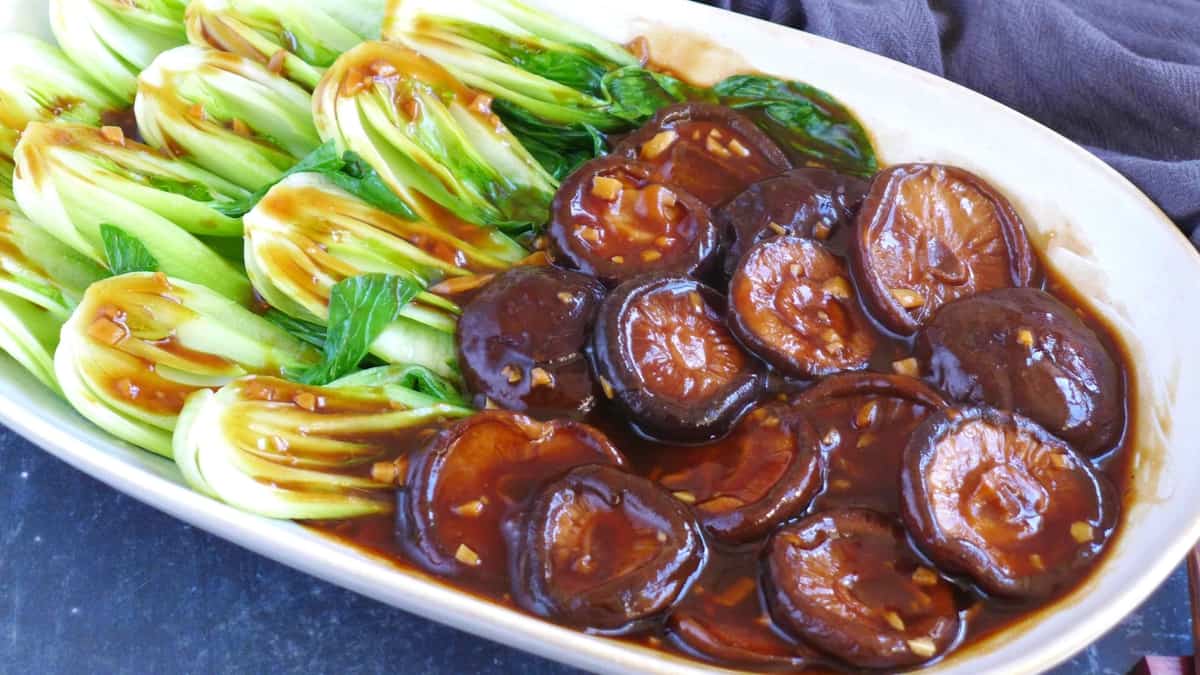
- In braised dishes. In Braised Mushrooms with Bok Choy, shiitake is the star ingredient (see image above).
- In fillings. Adding a bit of finely chopped, rehydrated shiitake makes every dumpling filling extra tasty. You can also find them in the filling for Spring Rolls, Stuffed Tofu, Lettuce Wraps, etc.
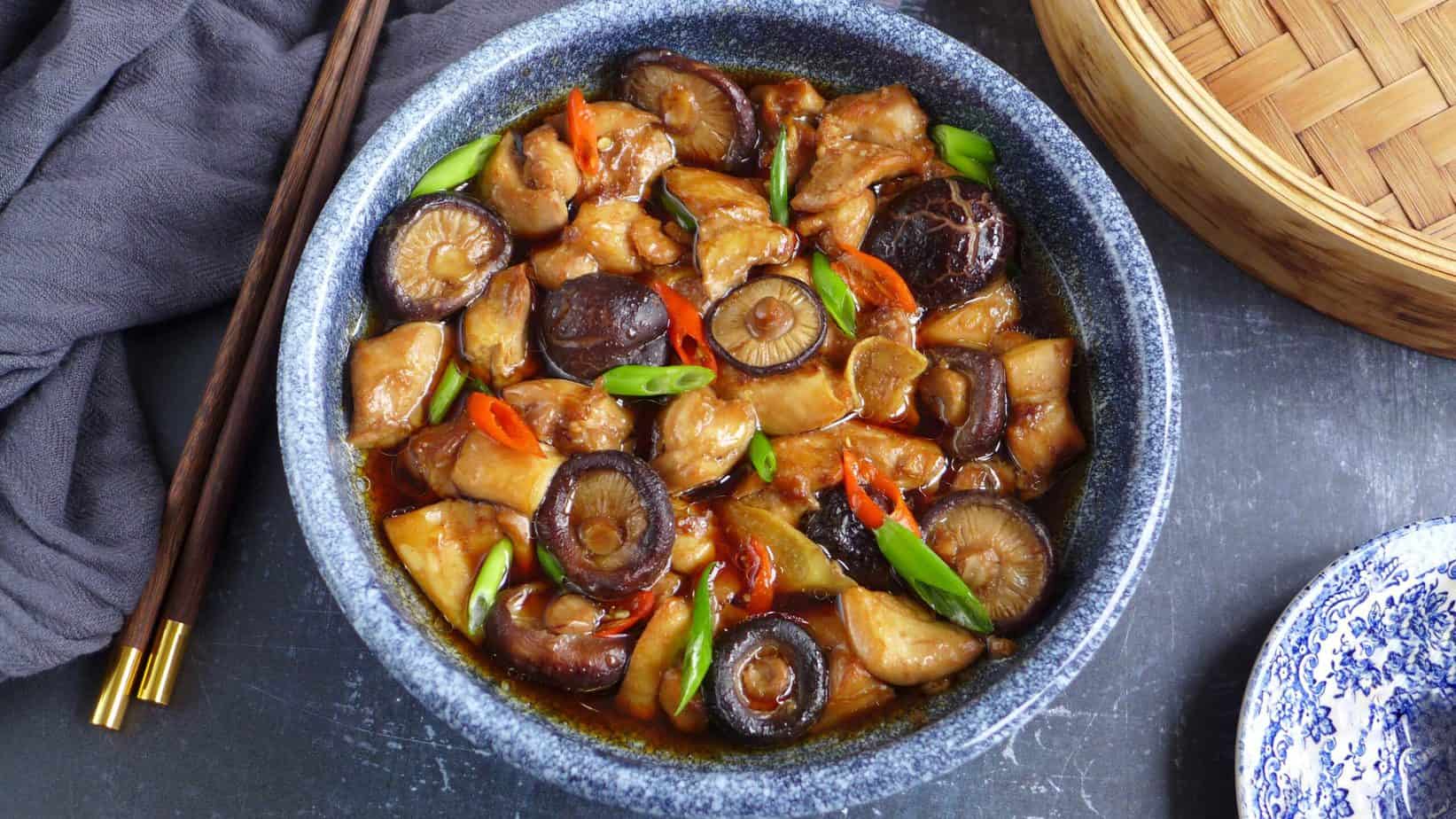
- In steamed dishes. Steamed Chicken with Mushrooms is a great example (see image above).
- In hot pot. Fresh ones are good as a food item to boil in the Hot Pot, while dried ones are brilliant at flavoring the Hot Pot Broth.
- In congee (rice porridge). You can add them to any savory congee. Try my 15-min Chicken Congee.
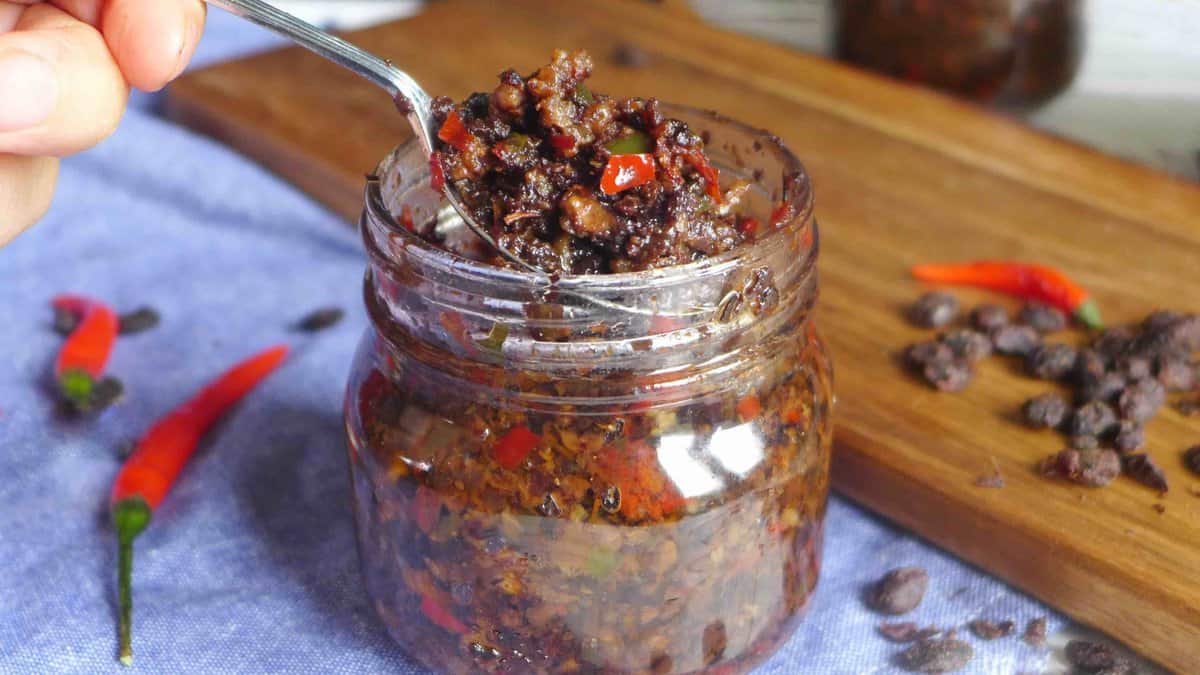
- In sauces. Thanks to its intense aroma, dried shiitake can be used to make sauces, such as Spicy Black Bean Sauce (see image above).
- Use as a substitute for meat. For example, use them to replace minced meat in Mapo tofu, Garlic Sauce Eggplant, Dan Dan Noodles, etc.
How to use the soaking liquid
Remember not to throw the water in which shiitake mushrooms are soaked. It picks up very well the aroma from the mushrooms, especially when using the cold water method.
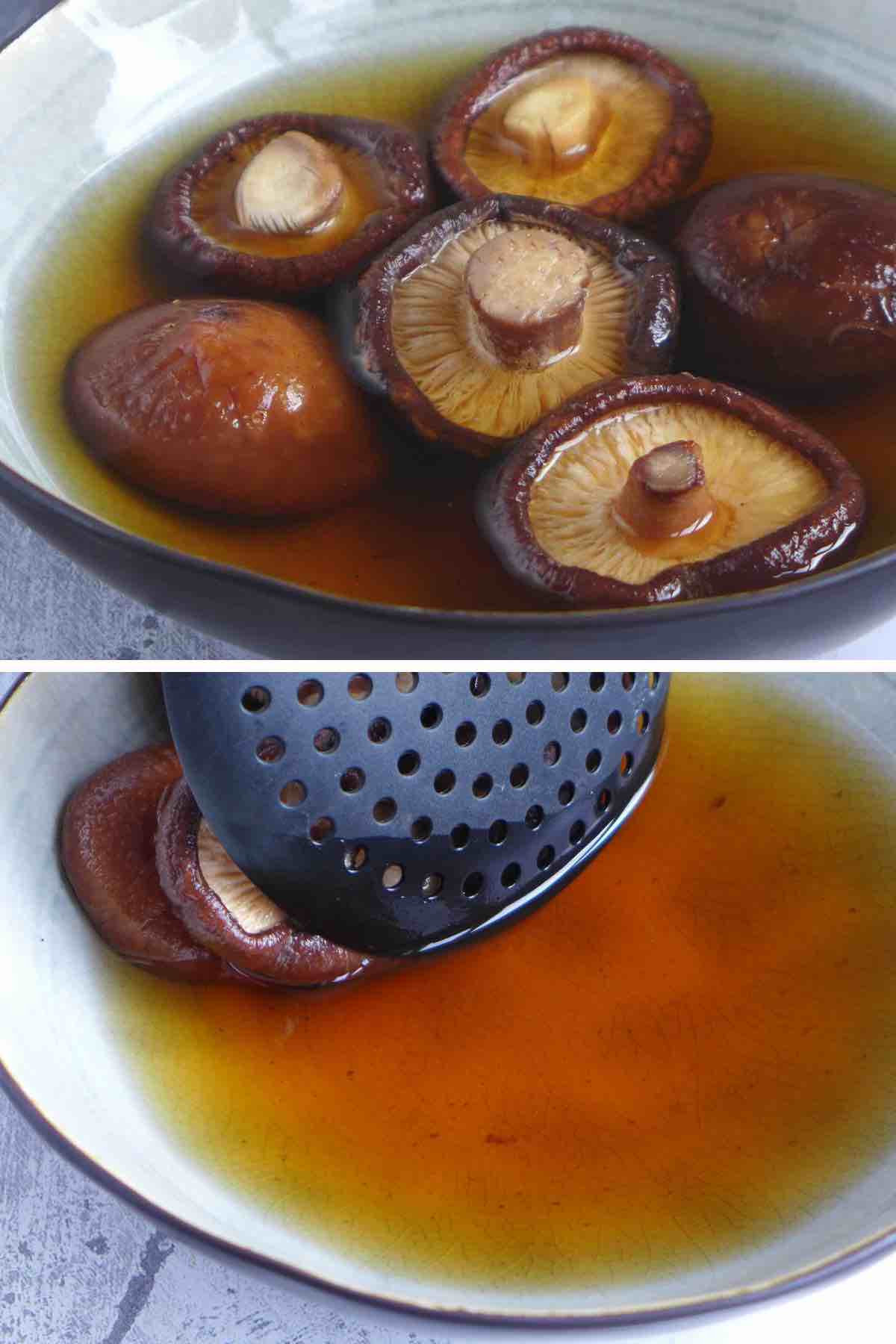
It can be used to elevate the taste of many dishes, just like how you use flavorful vegetable stock. For example, add a few spoonfuls to dumpling fillings to make it extra tasty and juicy; Use it to replace water/stock in braised dishes, soups and stews.
TIP: After taking out the mushrooms, allow the soaking water to settle for a while. When pouring out, only use the clear liquid and discard any residue that has sunk to the bottom.
How to Store
Fresh shiitake. It is better to remove them from their original packaging before storing to give them a cleaner and fresher environment. Wrap them in paper towels to keep the moisture build-up to a minimum and keep them in unsealed plastic bags.
Dried shiitake. Once you have opened the package, make sure to reseal them or place them in airtight containers. There is no need to put them in the fridge unless your kitchen is really warm and damp. They should stay good for a very long time in a dry, cool area away from direct sunlight.
FAQs
A: In many cases, you can replace one for the other. Fresh shiitake are good for quick stir-frying, grilling or hot pot. Dried ones are great in soups, stews, broth, or fillings for dumplings or bao buns.
A: If using fresh ones, there is no need to discard the stems. If using dried ones, you’ll need to trim the stems off in most cases as they tend to be tough to chew.
A: Dried shiitake mushrooms should have a pleasant (not excessive) chewiness after soaking and cooking. It sounds like they haven’t been fully rehydrated in your case. Try extending the soaking time.


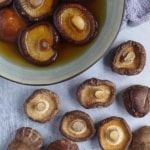

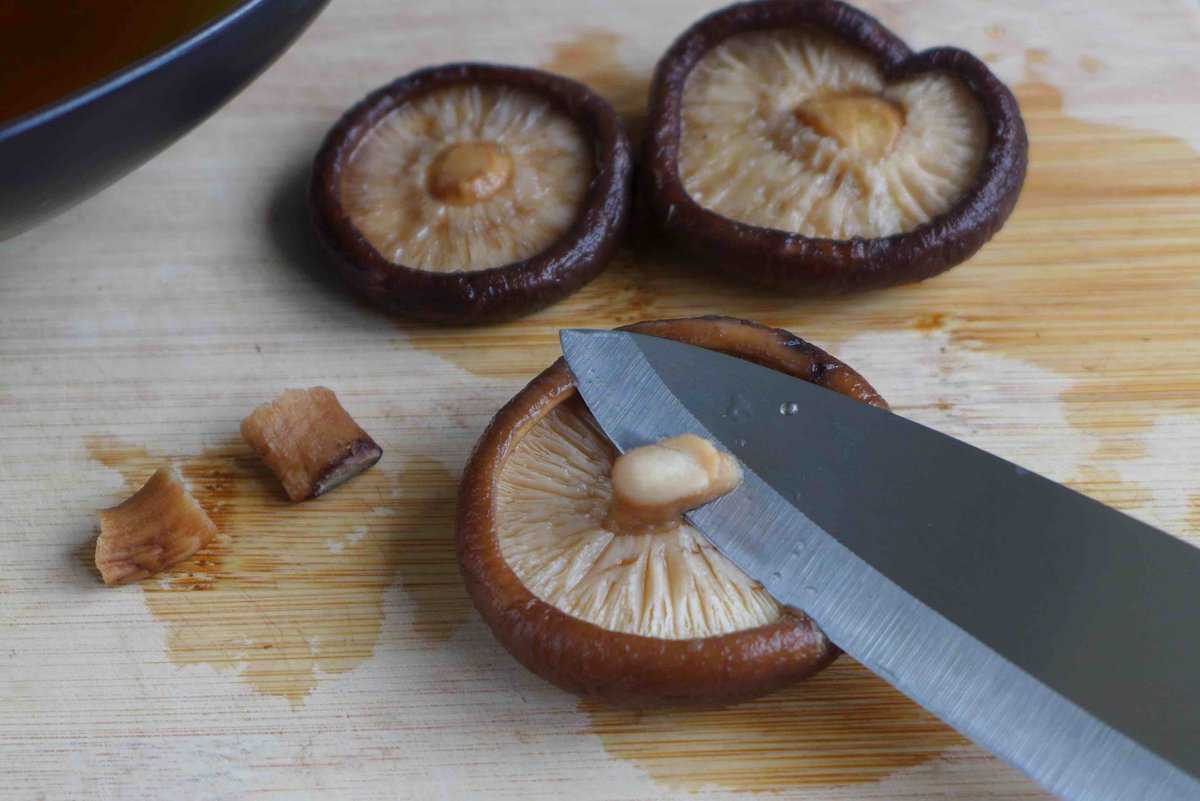
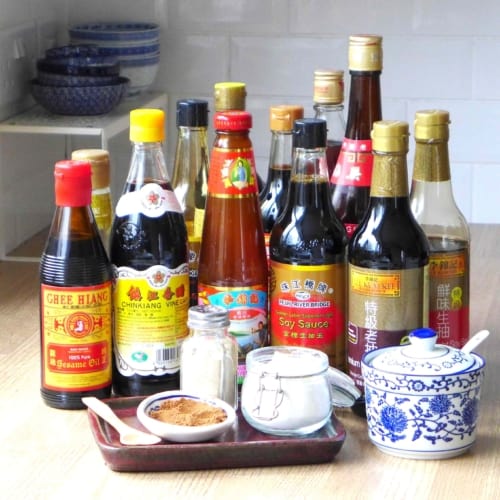
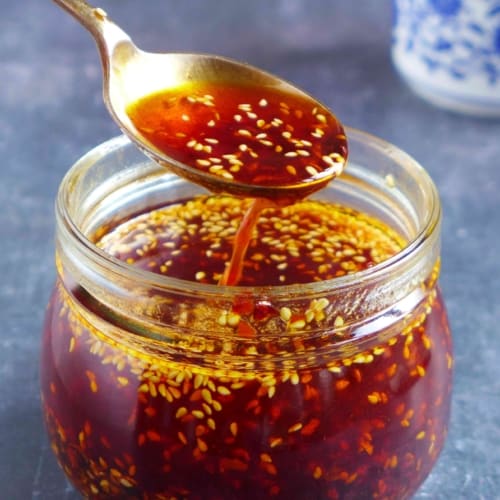

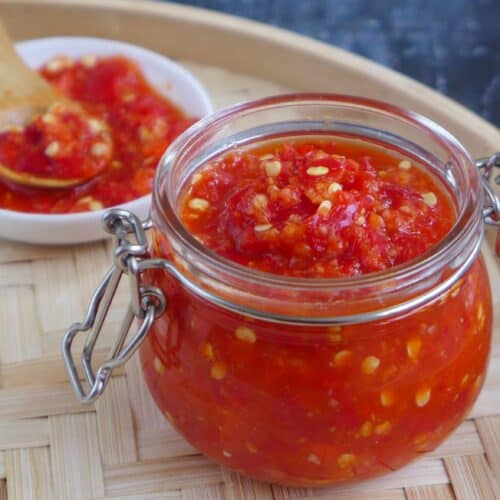
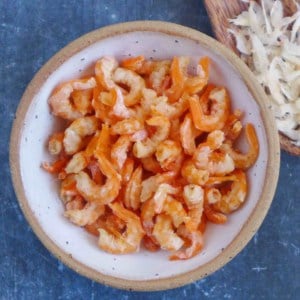
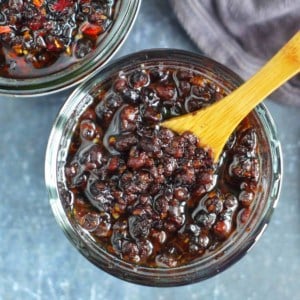
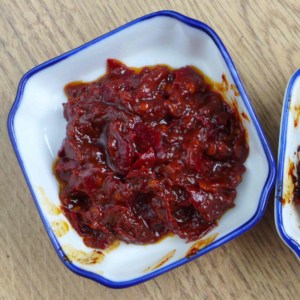
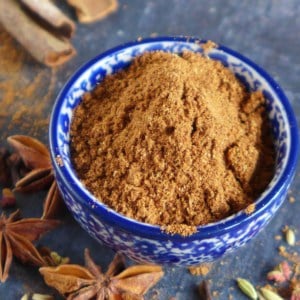
LEAVE A REVIEW